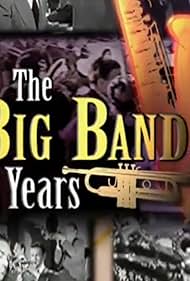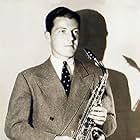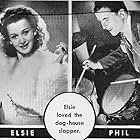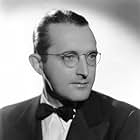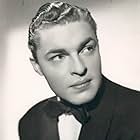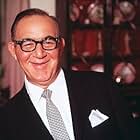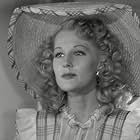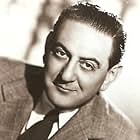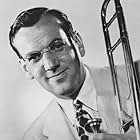Singer Peter Marshall hosts a look back at the bands and singers of the big band era of the 1930s-1950s.Singer Peter Marshall hosts a look back at the bands and singers of the big band era of the 1930s-1950s.Singer Peter Marshall hosts a look back at the bands and singers of the big band era of the 1930s-1950s.
Photos
The Andrews Sisters
- Themselves in 'Buck Privates'
- (archive footage)
Ray Anthony
- Self
- (archive footage)
Charlie Barnet
- Self
- (archive footage)
Tex Beneke
- Self
- (archive footage)
Cab Calloway
- Self
- (archive footage)
Larry Clinton
- Self
- (archive footage)
Tommy Dorsey
- Self
- (archive footage)
Ray Eberle
- Self
- (archive footage)
Bob Eberly
- Self
- (archive footage)
Benny Goodman and His Orchestra
- Themselves
- (archive footage)
Benny Goodman
- Self
- (archive footage)
Marion Hutton
- Self
- (archive footage)
Harry James
- Self
- (archive footage)
Sammy Kaye
- Self
- (archive footage)
Paula Kelly
- Self
- (archive footage)
Guy Lombardo
- Self
- (archive footage)
Glenn Miller
- Self
- (archive footage)
Storyline
Did you know
- Crazy creditsAvalon Casino Ballroom courtesy The Santa Catalina Island Company.
- ConnectionsFeatures Hollywood Hotel (1937)
- SoundtracksIn the Mood
Music by Joe Garland
Performed by Glenn Miller and His Orchestra
From Sun Valley Serenade (1941)
Featured review
The reason I gave this 10 stars out of 10 is because of the sound. Accolades to the audio engineer that equalized all the music in this video.
If you try to find recordings of all these songs, there'd be huuuge variations in bass, trebles, and volume. But in this show, the audio quality doesn't vary at all from song to song. And any analog hiss or whatever noise must exist in some of the songs, but not after they were transferred into this video. I didn't notice any distortion, so I guess the audio engineer had a way of minimizing that, also. Just smooth as silk. I turned on the bass-boost on my hi-fi to hear bass like no one could in 1940, and there was plenty of treble available; thanks. This music never sounded better.
Regarding the image quality, the gray scale, for some songs, provides little more than "black and white," and I mean ONLY black and white -- lacking any grays in between, which is how it was recorded 85 years ago. It was the resolution of the technology back then. It was probably a visual spectacle back then to have any video at all. I'm sure some gray could have been synthesized for this video, but I'll bet the artistic decision was made to leave it alone, a decision respectful of antiques, no offense to seniors intended.
The image quality would certainly explain some of the low ratings. But I think it would be a little thoughtless to give a low rating for 85 year old image quality. I prefer appreciating that you can sit back and listen to all of the different songs without having to keep messing with your volume/treble/bass controls -- all the work was done for us.
One thing I don't understand. My local PBS station says this video fills a two hour time slot. I came to IMDb assuming to find the actual running time, but IMDb says the video is two hours old. That means there is no measure of the video's length without the fundraising interruptions. It could be just-a-dream to expect this video to exist as a DVD without the fundraising breaks. It's a shame it doesn't exist, because the music is provided so sweetly.
If you try to find recordings of all these songs, there'd be huuuge variations in bass, trebles, and volume. But in this show, the audio quality doesn't vary at all from song to song. And any analog hiss or whatever noise must exist in some of the songs, but not after they were transferred into this video. I didn't notice any distortion, so I guess the audio engineer had a way of minimizing that, also. Just smooth as silk. I turned on the bass-boost on my hi-fi to hear bass like no one could in 1940, and there was plenty of treble available; thanks. This music never sounded better.
Regarding the image quality, the gray scale, for some songs, provides little more than "black and white," and I mean ONLY black and white -- lacking any grays in between, which is how it was recorded 85 years ago. It was the resolution of the technology back then. It was probably a visual spectacle back then to have any video at all. I'm sure some gray could have been synthesized for this video, but I'll bet the artistic decision was made to leave it alone, a decision respectful of antiques, no offense to seniors intended.
The image quality would certainly explain some of the low ratings. But I think it would be a little thoughtless to give a low rating for 85 year old image quality. I prefer appreciating that you can sit back and listen to all of the different songs without having to keep messing with your volume/treble/bass controls -- all the work was done for us.
One thing I don't understand. My local PBS station says this video fills a two hour time slot. I came to IMDb assuming to find the actual running time, but IMDb says the video is two hours old. That means there is no measure of the video's length without the fundraising interruptions. It could be just-a-dream to expect this video to exist as a DVD without the fundraising breaks. It's a shame it doesn't exist, because the music is provided so sweetly.
- forwardlobe
- Jun 16, 2022
- Permalink
Details
- Release date
- Country of origin
- Language
- Filming locations
- Catalina Casino - 1 Casino Way, Avalon, Santa Catalina Island, Channel Islands, California, USA(Peter Marshall's introductory segments filmed in the so-called "Avalon Casino Ballroom")
- Production company
- See more company credits at IMDbPro
Contribute to this page
Suggest an edit or add missing content

Top Gap
By what name was My Music: The Big Band Years (2009) officially released in Canada in English?
Answer